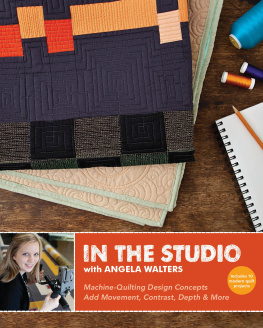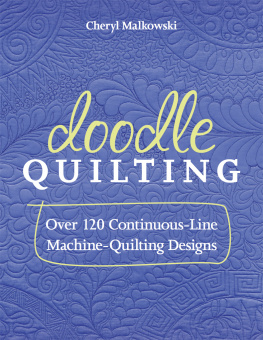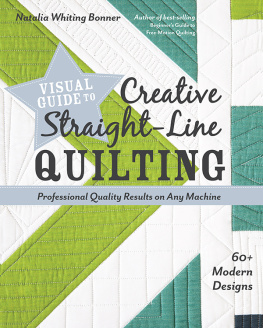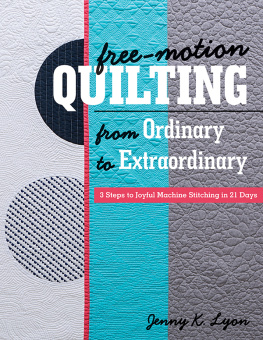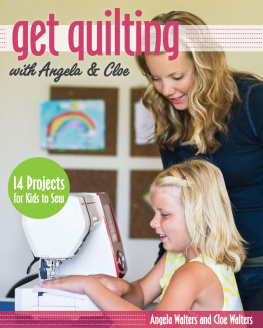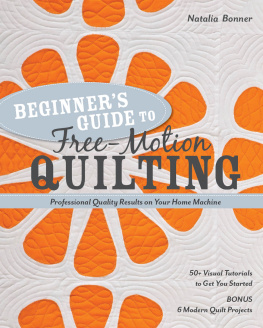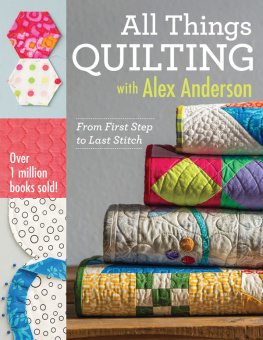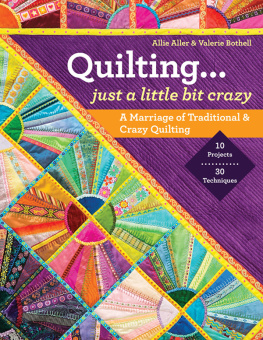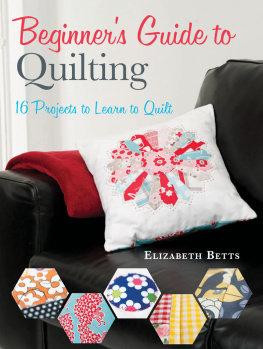Fabric is usually selected after a quilt design and color scheme have been chosen, although a special piece of fabric may help create a design idea or establish color for a quilt. Many kinds of fabric can be used for a quilt, but a primary consideration is fiber content.
Fabric of 100 percent cotton is the best choice for quilts. Cotton fabric is easy to cut, sew, and mark; it is also easy to press, holds a crease well, and is available in a wide range of colors and prints. The quality and weight of cotton fabric is determined by thread count. The thread count is the number of threads per inch (2.5 cm) of fabric. In high-quality cotton fabric, the thread count is equal lengthwise and crosswise; this is called an even weave. Most quilting cottons are either 78-square or 68-square. Fabrics with lower thread counts are too lightweight.
Cotton/polyester blends resist wrinkling and abrasion, making them a suitable choice for frequently washed quilts. The different lengthwise and crosswise thread counts in cotton/polyester blends cause a different amount of stretch along the lengthwise and crosswise grains, which can make it more difficult to piece fabrics accurately. Also, when stitched, cotton/polyester blends tend to pucker more than 100 percent cotton fabrics.
Choose good-quality fabrics that are compatible with the function of your quilt. If you are making a comforter for a childs bed, the quilt will be subject to hard and constant use; select fabrics that can withstand wear and frequent washing. If you are making a wall hanging, the durability of the fabric is less important.
Types of Quilting Fabrics
Quilting fabrics include prints, tone-on-tones, solids, broadcloths, hand-dyed fabrics, flannels, backing fabrics, and muslin.
Prints can include calicos, country prints, novelty prints, and designer-inspired prints. Tone-on-tones are used for backgrounds and transitions in your quilt design.
Solids and broadcloths come in every color including black and white. Kona brand is readily available.
Hand-dyed fabrics are 100 percent cotton and are available in gradations of color and other designs. Hand-dyed fabrics give your quilt a unique look. These fabrics can be purchased at some quilting stores, quilting shows, and from mail-order sources.
Flannel suitable for quilting is available at some quilt stores. It is especially nice for childrens quilts. It also makes a cozy backing for your quilt.
Muslin is a utility fabric used for foundation bases. It is generally a lighter weave and comes in a variety of widths.
Selecting Batting
Batting is the middle layer of a quilt. The loft, or thickness, of the batting determines the warmth or springiness of the quilt. Batting is purchased according to the amount of loft desired (opposite). The most widely used fibers for batting are cotton and polyester, or a blend of the two (referred to as 80/20). Cotton batting gives a flat, traditional appearance when quilted. Polyester batting gives a puffy look and is more stable and easier to handle than cotton batting. Cotton/polyester batting combines the flat appearance of cotton with the stability and ease in handling of polyester. New fiber blends are now available including bamboo and silk. Fusible batting eliminates the need for hand basting. It is useful for smaller lap quilts. Your quilt shop can advise you on the benefits of each type of batting.
Two types of batting are frequently used: bonded and needlepunch. Bonded batting is made by layering fibers and then adding a finish to hold the fibers together and make the batting easier to handle. Needlepunch batting is made by layering the fibers and then passing them through a needling machine to give a dense, low-loft batting. It is firm, easy to handle, and warm. Most needlepunch batting is polyester. The minimum distance between quilting stitches varies from one batting type to another and is noted on the batting package.
The fibers in batting may migrate, or move, affecting the appearance of the quilt. Bonded batting is treated to help control fiber migration. There are two forms of fiber migration: bunching and bearding. Bunching is the migration of fibers within a quilt, causing thick and thin areas. Bunching can be controlled by placing the quilting stitches /" to 1" (1.3 to 2.5 cm) apart. Bearding is the migration of fibers through the surface of the quilt. Polyester batting tends to beard, and these fibers may pill. Cotton batting may beard, but the fibers break off at the surface. To help prevent bearding, use a closely woven fabric for the quilt top and backing. Black batting is the best choice for a dark colored quilt. If bearding does occur, clip the fibers close to the surface of the quilt: do not pull the batting through the fabric. After clipping the fibers, pull the quilt top away from the batting so the fibers return to the inside of the quilt.

Batting is available in a wide range of sizes, although the selection in certain fibers and construction types may be limited. Polyester batting has the widest range of sizes and lofts. Batting should extend 2" to 4" (5 to 10 cm) beyond the edges of the quilt top on all sides to allow for the shrinkage that occurs during quilting. Batting is packaged for standard-size quilts. It is also available by the yard and in smaller packages for clothing and craft projects.
Guidelines for Selecting Batting
Fiber Content | Cotton |
Appearance of Finished Quilt | Flat |
Characteristics | Absorbs moisture, cool in summer and warm in winter |
Spacing of Quilting Stitches | /" to 1" (1.3 to 2.5 cm) |
Fiber Content | Polyester |
Appearance of Finished Quilt | Puffy |
Characteristics | Warmth and loft without weight, nonallergenic, moth and mildew-resistant |
Spacing of Quilting Stitches | 3" to 5" (7.5 to 12.5 cm) |
Fiber Content | Cotton/polyester blend |
Appearance of Finished Quilt | Moderately flat |
Characteristics | Combines characteristics of cotton and polyester |
Spacing of Quilting Stitches | 2" to 4" (5 to 10 cm) |
Batting Thickness
Low-loft | /" to /" (3 mm to 1cm) |
Medium-loft | /" to s/" (1.3 to 2 cm) |
High-loft | 1" to 2" (2.5 to 5 cm) |
Extra-high-loft | 2" to 3" (5 to 7.5 cm) |
Packaged Batting Sizes



